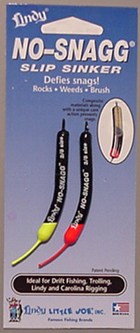













Promotional
Team Favorites
Lodging food and more








|
Shake Rattle and Roll for Summer Walleyes
By Sam Anderson
In the summer when walleyes move off to offshore reefs and cruise mud
flats they become somewhat scattered and if the water warms quickly they
may even become lethargic. Probably the most overlooked aspect of
walleye fishing is the use of sound.
Sound travels at a rate of about one mile per second through
water, which is five times faster than its speed through air. Fish
have developed extremely acute hearing, especially on low frequency sounds.
Anyone who dives below the surface assumes that the underwater
world is silent simply because humans have difficulty hearing in that medium.
Science has shown that the opposite is true. A moving school of bait
fish sends out sound waves. The noise of a tackle box scraped along
the deck of a boat is echoed through the water. Footsteps along the
bank send vibration into the water. Some fish can hear the sound
made by a worm wriggling into the bottom. Fish have become adept
at detecting and reacting to these various sounds that signal food or danger.
Humans and other mammals respond to sound also. Behavioral
scientist have demonstrated that dogs and other mammals respond to a bell
or light prior to eating and begin salivating before the food arrives.
Humans respond to a siren or a horn that is honked, because we associate
those sounds with danger and caution.
Sounds reach the ears through the skin, flesh, and bone of the
fish. In some species, there is an internal connection between the
ear and the swim bladder. The swim bladder acts as a resonator and amplifier,
which is particularly helpful in detecting very low or soft sounds.
Any species that has the connection between ear and swim bladder
possesses sensitive hearing. One can speculate that fish that spend
most of their lives in fast water do not have as acute hearing as those
that live in a still water habitat.
Strong hearing capability is not limited to predators or gamefish.
It is equally important for prey species to benefit from keen hearing as
an escape mechanism. By detecting a predator, they can hide or get
out of the way.
Fish have a second sound detecting system called the lateral
line. No other vertebrate has this organ which responds to strong,
low frequency vibrations in the water within a range of 20 to 30 feet.
It is sometimes referred to as the sense of distant touch, because it is
incredibly directional and accurate. With it, a fish can locate and
strike a black lure on a moonless night in turbid water.
When a fish is injured or its normal swimming is impaired, it
gives off distress vibrations. These are totally different sounds
than those of a healthy creature or one swimming unencumbered. Predators
recognize distress vibrations and hone in on them from considerable distances
with a purpose. They know that a fish in trouble is an easy meal
not requiring the expenditure of much energy. And, the predator seems
to know exactly from where the sound is coming even though it is far away.
There is also some evidence that chemical factors may be involved and help
predators locate injured prey.
This is why tackle manufacturers like Lindy Little Joe Tackle,
Normark, Storm, have put rattles in many of their lures. For example,
one of the hottest live bait delivery systems is the use of the Rattlin
No Snagg. This is actually a rattling weight that is secured to the line
either by a swivel or Carolina Rig. This live bait delivery system
can be enhanced by adding live bait such as nightcrawlers, leeches or a
minnow, but it's modification is that it has a rattle chamber that emits
a vibration to attract and allows them to follow the live bait to strike.
Terminal tackle for a live bait rig usually includes a walking sinker
threaded onto the line on top of a barrel swivel. Keep the sinker
weight as light as possible, yet heavy enough to let you feel the weight
along the bottom. Usually 1/4 to 1/2 ounce sinkers should be adequate
for late-season fishing. I prefer to use the
 |
I prefer to use the No-Snagg weights in the summer. The No-Snagg
is a banana shaped sinker that has a balsa, lead antimony weight that is
surrounded by epoxy paint and a protective clear seal coating, with a special
rubberized coating on the outside. The sinker also has a stainless
steel wire feeler out of the bottom that is tipped with a colored bead.
This has the super principles of the 3-way and the bottom ticking ability
of the bottom bouncer. Also, the No-Snagg when it hits an obstruction
simply pivots away from the snag and doesn’t get hung up.
From the opposite end of the swivel run a 2 to 4 foot snell of 6 to
8 pound test monofilament. Adjust the distance of your live-bait
rig from the bottom according to water clarity. In stained water
the fish will be tight to the bottom so the rig should run closer to the
bottom. Just the opposite frequently holds true in clear water. |
I prefer to use the Lindy Rig in this case because it allows me the versatility
of getting the live bait right in the face of suspended walleyes.
A plain hook, or a colored hook are great, usually number 6 or number 8
finishes off the rig except for the bait.
Let the fish show you, which form of live bait to use.
A general rule of thumb is to use smaller minnows in the spring and increase
the size into the summer and fall, with leeches and nightcrawlers being
most productive in the warmer months of summer. However, I've found
that walleyes don't always adhere to the rules. I like to have a
complete selection of bait in the boat with me whenever I go fishing.
Walleyes often take minnows lightly, and will sometimes nibble
at the tail of the night crawler like a small perch does. These slow
biters have to be given time to get the bait into their mouths so that
the hook can do its job.
Normark has used sound and rattles for years with it's Rattlin
Rapala and Fat Rap. The sound is what attracts the fish to keep them
coming on an attack path straight towards the lure. Water conditions
and specie of fish will determine what sounds you should try to imitate.
If you are fishing for bass or northern pike a noisy lure is the answer.
Likewise, if you are fishing in stained water then you want the walleye
to be able to hear your bait.

Rapala Jointed
Shad Rap |
Rattling Rapalas, and the new Jointed Shad Raps are a good example
of a noisy bait that will take a variety of fish under these conditions.
If you are fishing in clear lake quiet baits that produce wobble and vibration
are what you want to use. |
The exception to the rule is in clear water lakes, or reservoirs where
walleyes might be spooked by a rattling bait and move away from anything
that is foreign in their environment. To prove this point all you
have to do is use one of the newest aqua cameras on the market, such as
the Aqua Vu. In a clear water environment a bump of the camera housing
on a piece of structure will send fish scattering. While in stained
water conditions the fish might be alerted to the collision, but move towards
it to investigate.
The specifics of fishing in clear water are that fish see well
and they rely heavily on sight for feeding. Light penetration and
oxygen is deeper, therefore fish usually are found deeper and fish feed
more toward morning and evening or even at night. Fish are more active
on cloudy or windy days, because light is diffused and walleyes are less
spooked by boats and surface noise. Also, in clear water walleyes
school more and usually roam to find food, but if the water is slow to
warm, they might be a little lethargic.
Rocky reefs are natural ambush points for walleyes, especially during
increased wave activity. Anchor upwind and float a leech over the
rocks with a slip bobber. Make sure you don’t fish too shallow, walleyes
sulking in the crevices won’t move far for fast moving bait.
Besides rattle, wobble and vibration don't overlook color. Try
to match bait already found in the environment. Use flash tape to
highlight crankbaits to give that extra flash. Along with flash,
you might want to change to a dramatic color. Chartreuse and the
new Firetiger colors aren't part of the environment but in stained water
they are a visible target for fish. The type of terrain that you
are fishing will determine color also. If you are fishing over sand
maybe crawfish color, or next to a weed bed or drop off, a perch color
will trigger fish.
Feeding within a lake, stream, or other body of water often becomes
a chain reaction. Fish hear the sounds of other fish feeding and
often begin to look for food themselves. The sounds of a tail thumping
and splashing can have a positive effect on many fish at the same time.
In essence, the fish are attracted to the rattling noise and
like other animals they are inquisitive and interested in what is going
on. This is essential because once you have their attention catching
is made easier. If this method sounds good to you then why not drop
me a line at www.samanderson.com
and we can talk over this and other techniques. Hope to hear from
you soon.

Fish
Clix Banner Exchange
Walleyes Inc. website is maintained
by Randy
Tyler Fishing the In-Fisherman Professional Walleye Circuit, Masters
Walleye Circuit and the Team Walleye Circuit. All rights reserved.Copyright
1999/2002
Please visit these site sponsors
Daiichi/Tru-Turn Hooks,
Lindy
Little Joe,
R-A.M Mounting Systems,
Ranger
boats, Mercury Outboards,
Bedford
Sales , Church Tackle, Panther
Marine Products,
Webfoots body
sock, Bait Rigs Tackle ,Dual
Pro Charging Systems, Daiwa Rods and
Reels, Driftcontrol Wind socks,
Trojan
Batteries
|



